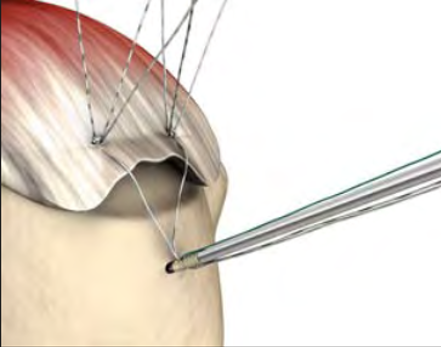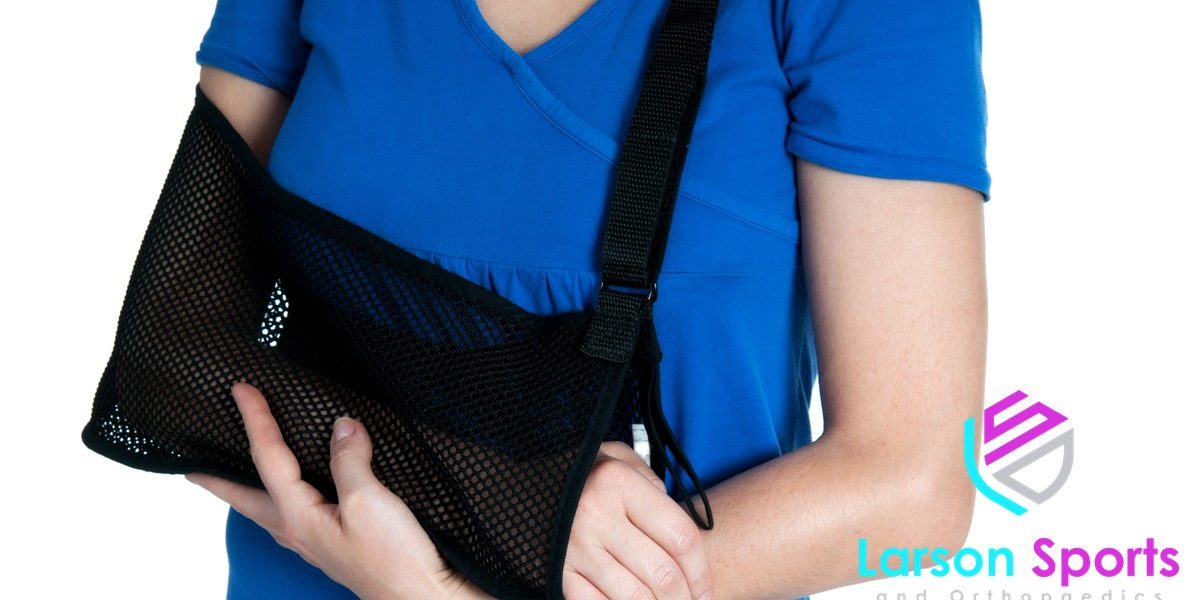Rotator cuff surgery is one of the most common orthopedic surgeries in America. Some studies estimate that 70% of us develop some kind of rotator cuff tear by the time we are 70 years old. Now that includes partial tears which don’t usually require surgery. But this at least lets you understand just how common rotator cuff repairs have become! And while the pain from surgery may make you miserable for a couple of days, the real pain is the sling. Wearing your sling after rotator cuff surgery is super annoying, I get it.
But it is necessary, and I’ll tell you why: Because you can’t argue with biology. You can beg and plead with ME… but I’m not the one you need to convince.
Don’t Listen To Anyone Else’s Recovery Story
Everyone has a friend who thinks you are doing your recovery all wrong. But trust me: you shouldn’t start bench pressing a week after surgery just because your friend Bob told you he did.
Because to be honest, Bob probably didn’t have the same kind of tear you had. Heck, he may not have had a rotator cuff tear at all. Most people can’t remember what they had for breakfast yesterday, let alone what surgery they had ten years back. Chances are he does not remember it clearly anymore.
Plus, Bob is the kind of guy that always has to out-do other people with his stories, and he’s probably just trying to look cool. (Between you and me, Bob probably didn’t get off the couch for six weeks after his surgery.) In short, don’t listen to Bob. He’s got a bad memory, and he’s likely full of it!

How Long Do You Have to Wear a Sling After Rotator Cuff Surgery?
It typically takes about six weeks for the rotator cuff tendon to heal reasonably well after a repair. So most of the time, your surgeon will recommend that you wear a sling for about six weeks after a cuff repair.
This is essentially the minimum time it takes to heal. By that point, it should be glued down enough where it’s okay to start using the arm for some daily activities. Of course, the tendon continues to remodel itself over the course of a year or more. This involves making microscopic improvements to the tendon structure and alignment. It’s just like building a house: The exterior goes up quickly, but the interior takes a long time to finish.
Why Is It Important To Stay In Your Sling after Rotator Cuff Surgery?
What happens if you skip the sling? You’ll shoot your eye out!!! Okay, not exactly, but you can tear your cuff right out of the sutures before it’s had a chance to heal. And that’s pretty similar, right?
Now, big injuries like a slip and fall can rip your cuff free of the repair in an instant. But a sling won’t save you from that. No, what the sling saves you from is the slow, steady loosening at the repair which occurs with everyday activities.
This type of loosening and failure is called “creep” and it comes from cyclic loading. Essentially, a thousand little motions each loosen the repair and lead to gaps, holes, and sutures cutting through the cuff.
How Do Simple Activites Ruin A Rotator Cuff Repair?
Cyclic loading is essentially the continuous use of your shoulder during basic daily activities. This includes simple things like putting dishes away, taking things out of the refrigerator, driving, or even the natural swinging of your arms while you walk. Those sutures are tough. And, with a solid wire core, they can saw their way right through the delicate tissue of your cuff, if you are swinging that arm around constantly.
Studies show daily activities of living can cause loosening of a rotator cuff repair and failure of healing. In fact, just the motion you do in a single day could cause the cuff to loosen anywhere from 3 mm up to a full centimeter again. For perspective, most rotator cuff tears average about a centimeter, to begin with.
And even one millimeters worth of displacement can prevent a rotator cuff repair from healing. So even the lightest daily activities could ruin your rotator cuff repair if you do them enough. This is why it’s so important to wear your sling after a rotator cuff surgery.

Can You Move My Shoulder At All After A Rotator Cuff Repair?
Well, yes and no. Holding the shoulder completely still prevents failure from cyclic loading. But it also prevents the stretch and strain that the tendon cells require as a signal to start healing. We have to walk a tightrope of how much motion you do after cuff surgery.
Too little motion results in stiffness and a loss of some range of motion after the cuff is healed. And studies show that a little early motion with physical therapy can prevent that stiffness as well as improve the strength of the healed tendon. But too much motion will cause the sutures to saw right through the muscle.
But How Much Motion Is Too Much?
This is where the art of medicine comes in. It’s important to listen to your surgeon and physical therapist, sticking to the prescribed exercises. Your surgeon has years of experience in this matter. And they actually got to see how sturdy your rotator cuff was during surgery.
Torn rotator cuff tendons vary widely in overall tissue quality. Some are thick and solid beyond the tear. But some are shredded; some are soft; some are under a lot of tension. The quality of both the tissue and the repair plays a significant role in how much motion your surgeon will let you do after surgery.
Ultimately, what I’m saying is to listen to the experts. Follow the directions of your surgeon and therapist. Do what they tell you, but don’t think that allowing SOME motion means you are allowed to do whatever you want!
Other Interesting Articles
This article will show you exactly what your rotator cuff is, and what happens when it tears.
 Is Your Workout Leading To Shoulder Problems?
Is Your Workout Leading To Shoulder Problems?
Learn how to keep your shoulders healthy while doing high-intensity exercise.
 4 Simple Ways To Bench Press Without Hurting Your Shoulder
4 Simple Ways To Bench Press Without Hurting Your Shoulder
Just a couple corrections is all it takes to save your shoulders!
Works Cited
Burkhart S, et al. Cyclic loading of anchor-based rotator cuff repairs: confirmation of the tension overload phenomenon and comparison of suture anchor fixation with transosseous fixation. Arthroscopy Dec 1997
Lorbach O, et al. Cyclic Loading of Rotator Cuff Reconstructions: Single-Row Repair with Modified Suture Configurations versus Double-Row Repair. AJSM Feb 2008
Shen C, et al. Does immobilization after arthroscopic rotator cuff repair increase tendon healing? A systematic review and meta-analysis. Arch Ortho Trauma Surg Sep 2014
Gallagher BP, et al. Early versus delayed rehabilitation following arthroscopic rotator cuff repair: A systematic review. Phys Sportsmed May 2015


